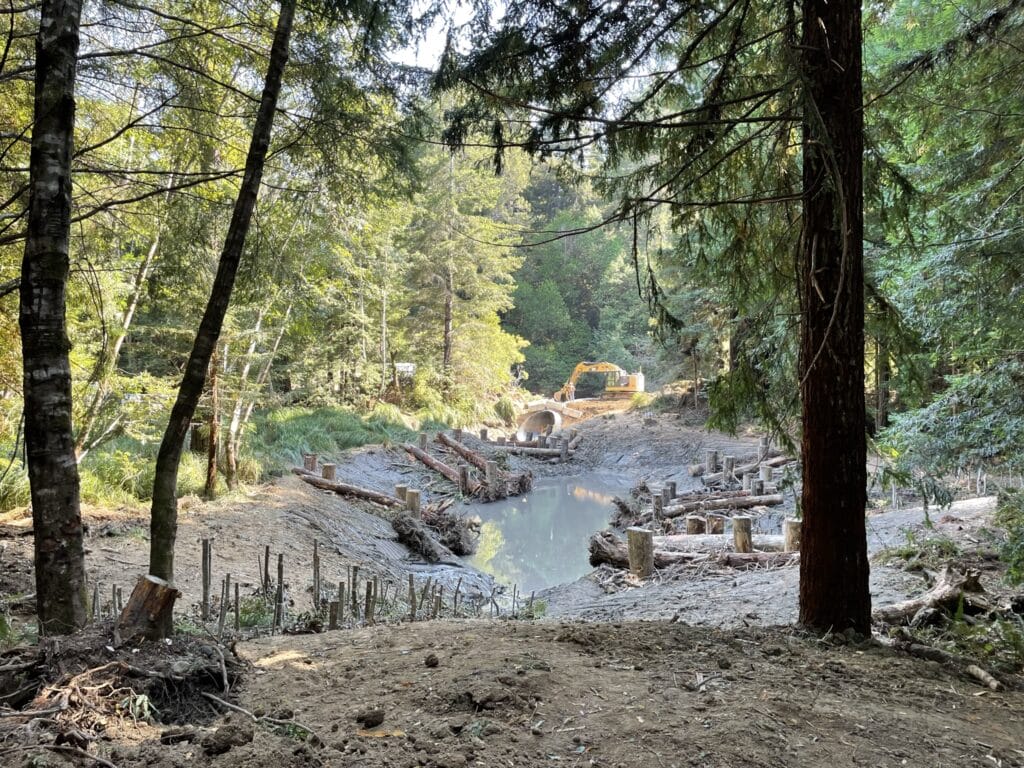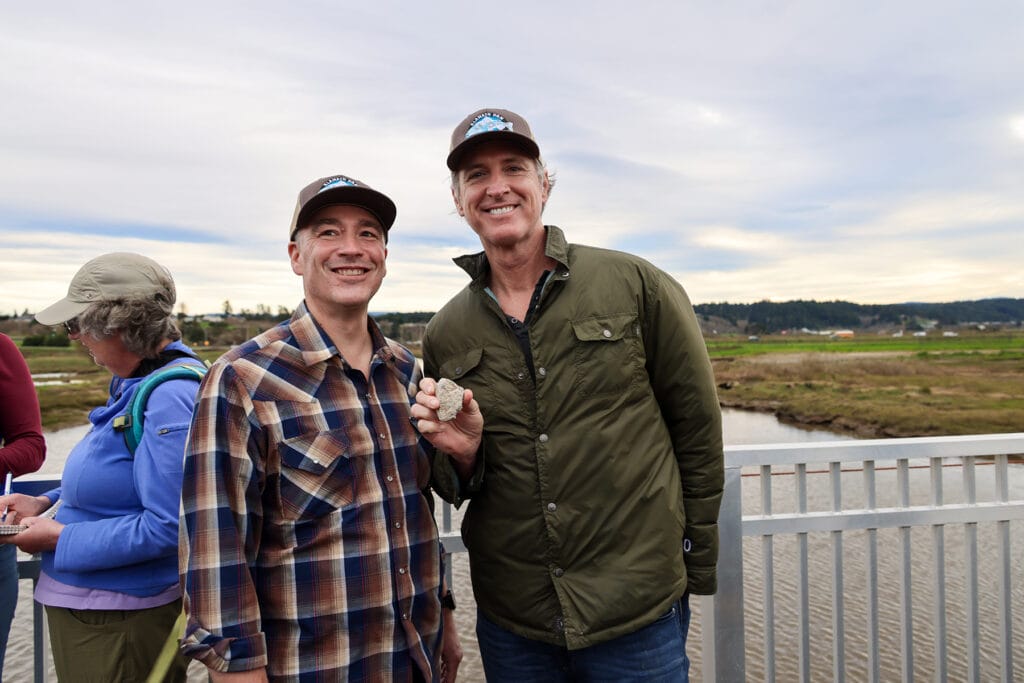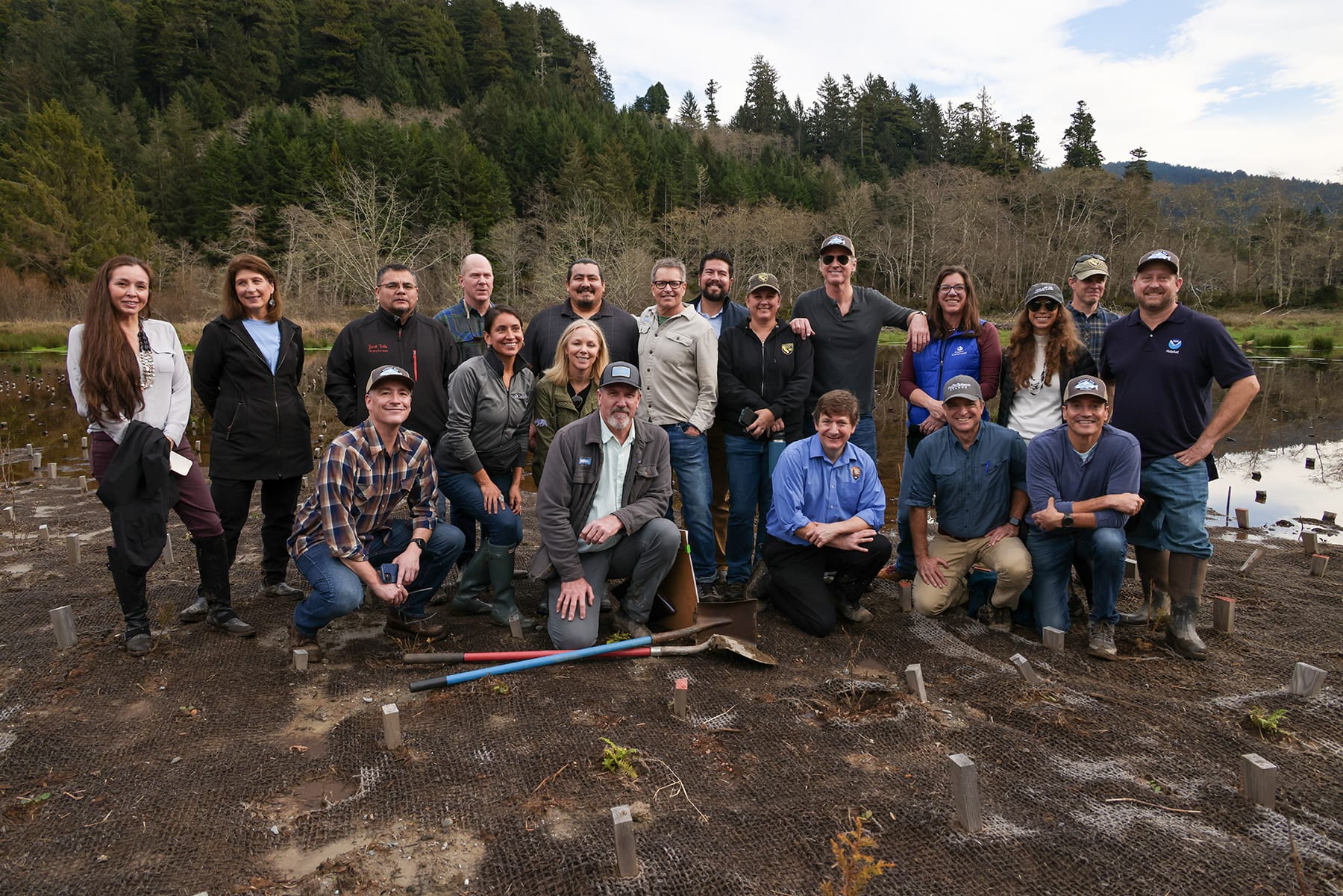It’s been tough going for salmon and steelhead in California for basically the last century. Dams, diversions, pollution, and habitat loss have hammered many populations to the point where they are now listed or imperiled. The warming climate is intensifying the impacts of these factors.
On January 30, Governor Gavin Newsom released a plan for reversing the decline of native salmon and steelhead in California. This plan, California Salmon Strategy for a Hotter, Drier Future, affirms that actions and policies long supported by TU, tribes, and fishing and conservation groups are key to recovery of native salmon and steelhead and their fisheries, and that strategic, sustained collaboration will be needed to implement these actions and policies.
California’s diverse climate, geography and ecology provide the southernmost range of four species of salmon on the West Coast of North America. Millions of salmon once returned annually to California streams, including major rivers such as the Klamath, Eel, Sacramento and San Joaquin, bringing with them nutrients from the ocean that nurtured entire ecosystems and providing the foundation of the cultures and traditions of many Indigenous peoples.

But twice over the past five years, salmon returns have been so poor that commercial and sport salmon fishing seasons have been closed in California, and tribal harvest extremely limited.
For the past twenty years Trout Unlimited has worked up and down the state to improve in-stream conditions for California’s salmon and steelhead. The tactics we have pioneered and implemented in this effort have proven consistently effective in helping recover salmonids. Several of these tactics, including removing obsolete dams, enhancing dry season flows, and reconnecting rivers to floodplains, are called out as key strategies in Newsom’s salmon plan.
For example, the Salmon Strategy expresses support for removing obsolete dams on the Klamath, Eel and Ventura Rivers, and calls out the importance of a TU-led initiative in the Central Valley, Reorienting to Recovery, a collaborative effort to transcend historical divisions among diverse interests and improve the application of current science to recovering salmon and steelhead runs in the Sacramento and San Joaquin watersheds.
TU released a statement on Gov. Newsom’s salmon plan through the California Salmon and Steelhead Coalition, a partnership between California Trout, The Nature Conservancy, and Trout Unlimited. The Coalition works to increase streamflow in North and Central Coast watersheds to benefit salmon and steelhead while improving water supply reliability for communities.
In many coastal watersheds, for example, TU and our Coalition partners have developed projects that help farms and landowners switch the timing of water use from summer to winter, keeping water instream when salmon need it most and improving water security for people during drought years.
The Salmon Strategy also supports science and policy actions for which the Coalition has long advocated. A Coalition-driven bill (AB 1272), for example, would help achieve the Governor’s goal of creating minimum instream flow standards for coastal watersheds and developing management plans to help communities meet those standards in drought years.

The Coalition also has been a key player in understanding and establishing the science needed to ensure salmonids have enough water at the right time and of sufficient quality, through development of the California Environmental Flows Framework. The Coalition supports this work through operation of dozens of streamflow gauges and development of modeling tools to assist with water management decisions.
The salmon plan’s overt support for removing the two obsolete dams of PG&E’s defunct Potter Valley Project on the Eel River is welcome. TU and our Salmon and Steelhead Coalition partners have played a central role in developing a plan for decommissioning these dams, which will re-establish anadromous fish access to hundreds of miles of prime headwater spawning and rearing habitat.
Brian Johnson, TU’s California Director, said, “Most salmon and steelhead stocks in California are hanging on by a thread. There is no time to lose in implementing the policy changes and on-the-ground actions described in Gov. Newsom’s Salmon Strategy, which affirms the crucial importance of the dam removal and river restoration work TU has been doing in California and the importance, and urgency, of expanding this work. We applaud the Governor for his leadership, and look forward to working even more closely with his administration, state and federal resource agencies, and our Tribal Nation partners to reconnect and restore habitat and river flows and to recover salmon and steelhead populations to healthy, harvestable levels in the face of climate change.”



